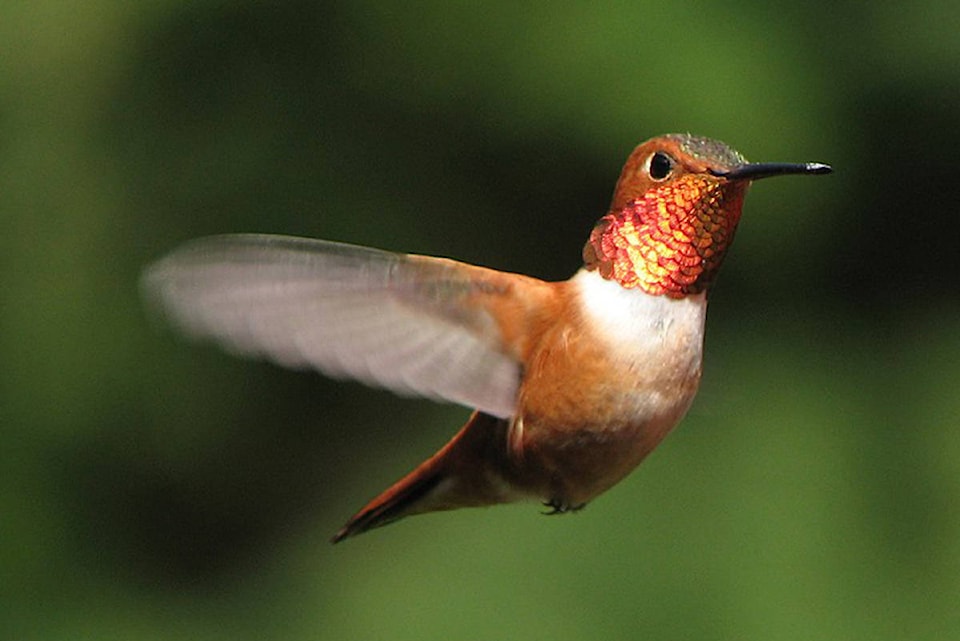Nancy Kramer
Cloverdale Reporter
As we enter spring and the red-flowering currant blooms, my favourite bird, the rufous hummingbird, returns to my garden to amaze me with its stunt flying.
With a decrease in wildlife habitat across the province, it is becoming more important for people to provide sources of food for backyard creatures, including hummingbirds. A hummingbird feeder is excellent, but I like to provide natural food, such as red-flowering currant, my favourite shrub, for my favourite avian visitors.
Red-flowering currant is a shrub native to British Columbia. It can grow up to three meters in height and its leaves resemble small maple leaves, with three to five lobes. The shrub’s crowning glory is the masses of bright, pink-red flowers that bloom from March to May. The red-flowering currant prefers sun or partial shade and well-drained, moderately fertile soil. Once established it is drought tolerant. And best of all, hummingbirds just love it.
Some other shrubs that will attract hummingbirds are weigela and buddleia. Both shrubs will grow in the same conditions as the red-flowering currant. As an added bonus, “Wine and Roses” weigela has dark purple foliage as well as pink flowers, making it an attractive addition to your garden. It grows up to two meters in height with an equal spread.
Trumpet vine and honeysuckle vine also attract hummingbirds. Both are fast growing and need the support of a trellis or arbor. Some honeysuckles have a fragrance, so it is best to purchase them when they are flowering so you can judge if the scent is to your preference.
There are numerous perennials that attract hummingbirds. Look for ones that have red flowers and trumpet-like flowers such as bee balm, montbretia, columbines, or beardtongue.
Hummingbirds love water, especially if it’s moving. A gentle, continuous spray from a nozzle or a sprinkler hose is perfect for a bath on the fly. If you have the space, a pond with a water fountain is perfect for attracting birds.
If you have the right plants in your garden, hummingbirds will hopefully nest. They prefer conifers such as the western red cedar to build their nest, but they will adapt to whatever they can find. A hummingbird’s nest is very small and hard to spot. They are constructed using moss and spider webs.
In addition to rufous hummingbirds, we also have Anna’s hummingbirds, which overwinter here on the coast.
Anna’s hummingbirds are a bit larger than the rufous, but the easiest way to spot the difference is that the Anna’s humming bird has a fuchsia pink throat while the rufous has an orange-red throat.
They eat mainly insects in the winter, but it doesn’t hurt to provide them with a feeder. If you do, make sure that you fill it and clean it on a regular basis.
Nancy Kramer is the president of the Cloverdale Garden Club. The next garden club meeting will be this Thursday, March 12, from 7:15 to 9:15 p.m. at Don Christian Recreation Centre (6220 184 Street).
editor@cloverdalereporter.com
Like us on Facebook and follow us on Twitter
